Four and Eight Shaft Twills II
Marcy Petrini
June 13, 2016
Last week (6-June-16 Blog) I compared undulating twills on 4 and 8-shafts, which I am including in my Convergence™ monograph; this week we’ll compare advancing twills.
Here is the drawdown for an advancing straight twill on four shafts. (Right-click on these drafts to get a larger version in a new window.)

The fabric is woven tromp as writ, so both of threading and the treadling are a bit complex. The repeat starts with a complete straight twill, but it doesn’t have to.
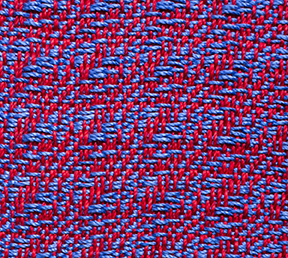
If we use a pointed twill as the starting point for the advancing, the treadling can be a straight draw as shown in the next drawdown.

The fabric for this twill doesn’t show the pattern very well, but the motif contributes to the complex way in which the light is reflected because the floats change direction repeatedly.
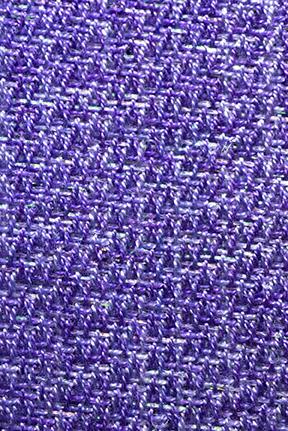
The next advancing twill is on eight shafts. From the drawdown, note that the threading is that of a straight twill and the advancing occurs in the treadling which is based on a pointed twill. Of course the advancing could be done on the threading as well. The eight shafts make it possible for the zig zag to be doubled with the floats interrupted by the warp.

The resulting fabric below shows the same characteristic mentioned for the four shaft twill, the light reflects as the floats change direction.
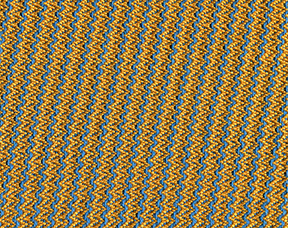
Whether on four or eight shafts, these twills have a level of complexity that results in interesting fabrics.
Please email comments and questions to
Four and Eight Shaft Twills
Marcy Petrini
6/6/2016
I preach that it would take more than one life time to weave all of the 4-shaft twills, let alone all the other structures possible on four shafts. Still, eight shafts offer more options, there is no disputing it.
I am in the process of writing about 8-shaft twills for my Convergence™ monograph and two twills caught my attention: undulating twills and advancing twills.
The blog of Dec 21, 2015 was on four shaft undulating twills. Below is another sample on four shafts. It was woven a bit differently than those previously described, as seen in the drawdown that follows. (Right-click on these drafts to get a larger version in a new window.)
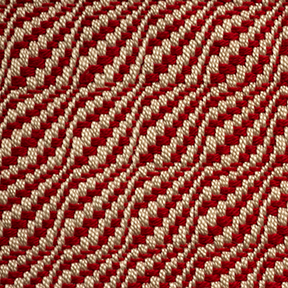
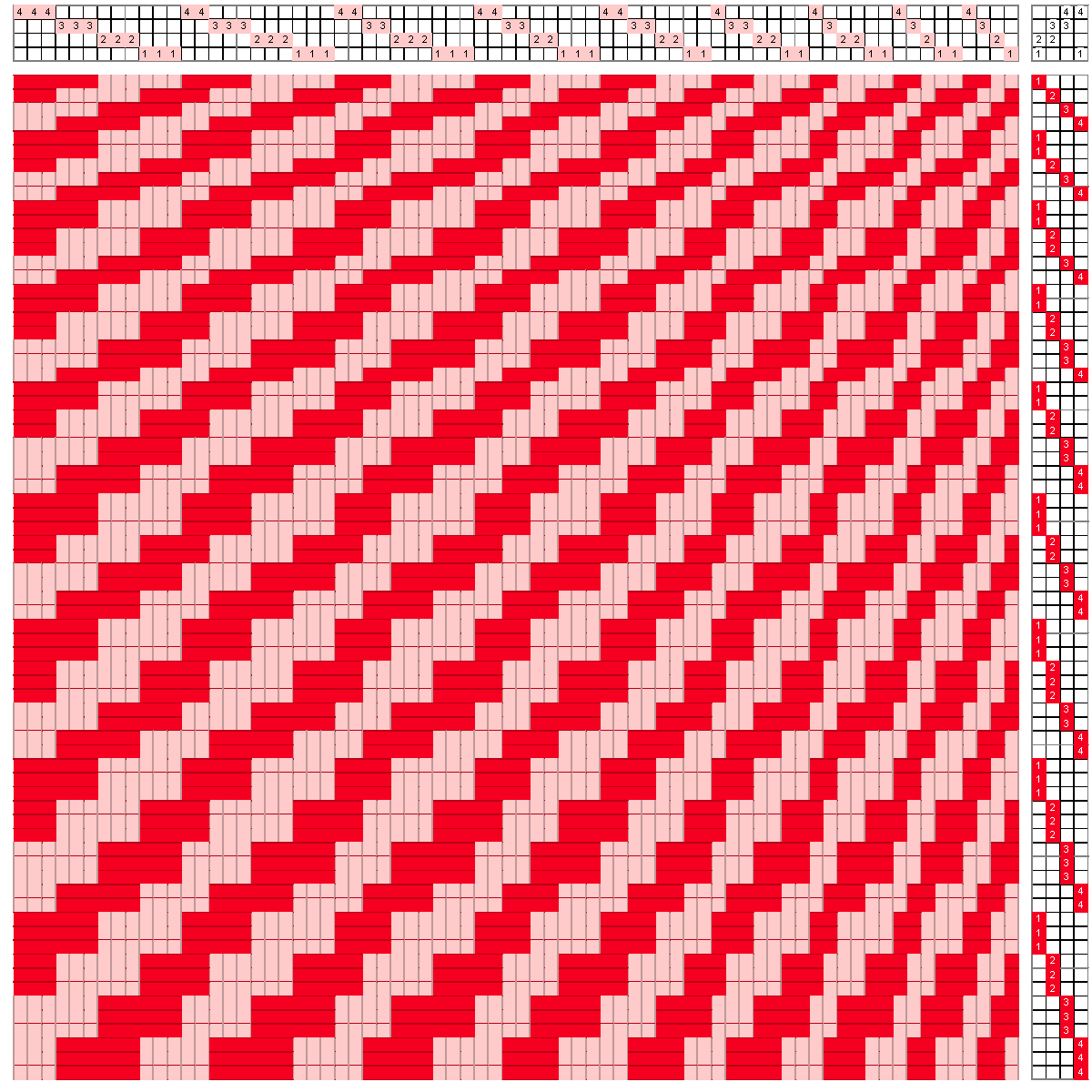
The draft above shows one repeat of the pattern so that the threading and treadling can be read. The following drawdown has two repeats, showing the undulation more completely.

The fabric that follows is an undulating twill on eight shafts. Unlike the one on four shaft, this one was threaded on a straight draw and all of the undulating occurs in the treadling. Of course it’s possible to thread an undulating twill on eight shafts, but that sometimes is the advantage of more shafts: the threading can be simple and the treadling does all the work.
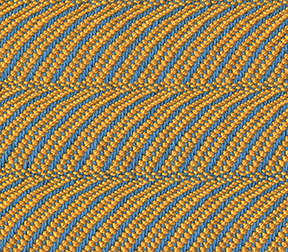
The drawdown below shows two repeats of the treadling for this eight-shaft twill; it looks complicated but it really isn’t because of its repetitive nature; the treadling on eight shafts is not any more complicated than the one on four shafts.
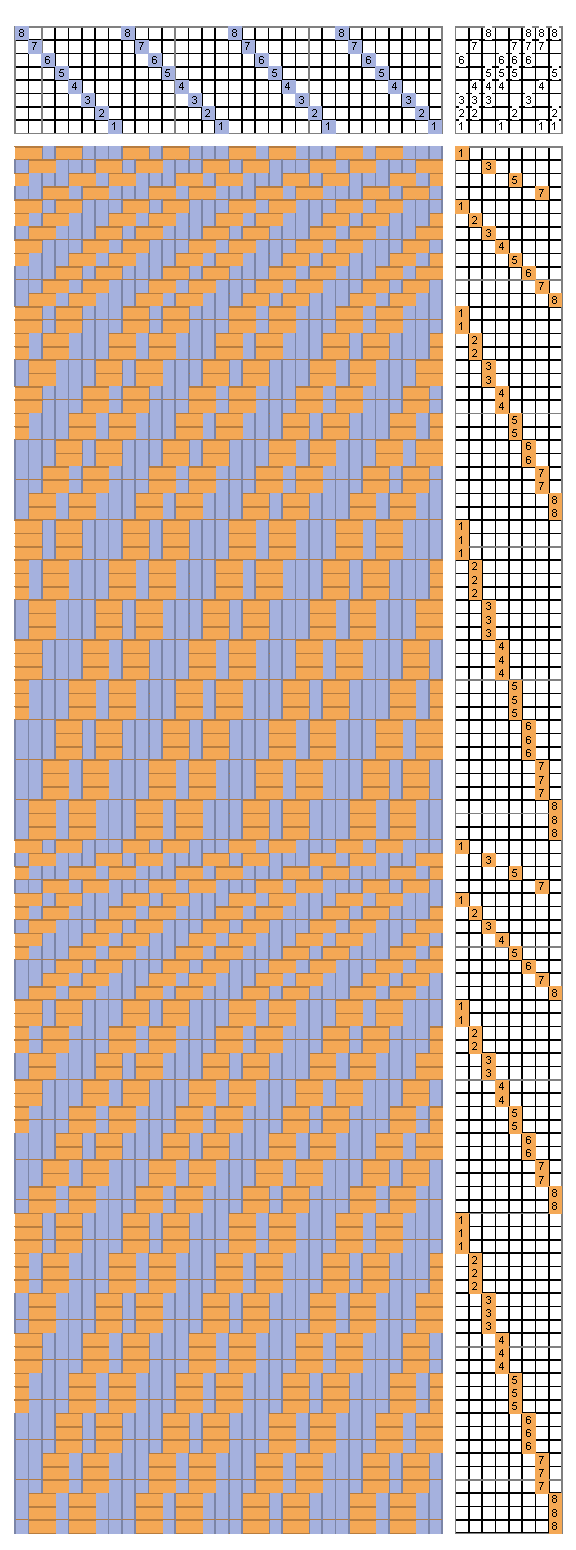
Regardless of the number of shafts, floats can be long with these twills, so careful planning is necessary.
Are more shafts worth it in this case? You be the judge, it’s a personal decision.
Next time, a similar comparison for advancing twills.
Please email comments and questions to
Shadow Weave II
Marcy Petrini
5/30/2016
In the blog of April 18, 2016, I talked about the unique characteristics of Shadow Weave: on one hand, it’s a Color and Weave, on the other hand, the motifs can maintain the look of the underlying weaving structure, usually a twill; this is generally not the case with the non-Shadow-Weave Color and Weave motifs, which tend to be optical illusions hiding the weaving structures that produce them.
I mentioned that I was weaving samples. Those are for the monograph on Color and Weave that I am writing for my Convergence™ seminar. So, here is a peak and another look at why Shadow Weave can be considered Color and Weave.
Below again is the drawdown from the April 18, 2016 blog: (Right-click on this draft to get a larger version in a new window.)
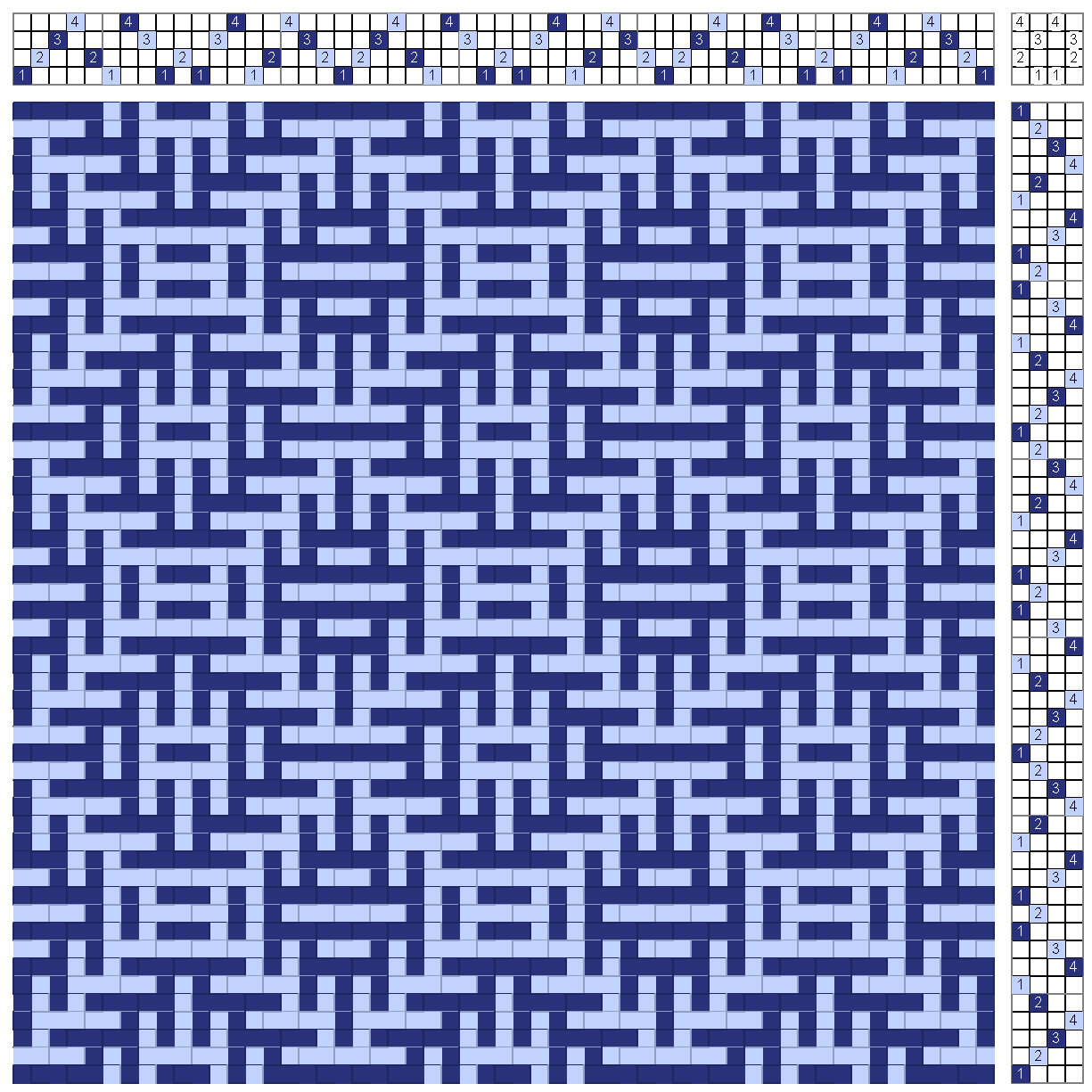
And here is the sample, wet finished after coming off the loom:

The staggered diamonds of the pointed twill are visible in the cloth, even more clearly than the drawdown. But zoning in close to the middle of one of the diamonds clearly reveals why this is a Color and Weave:
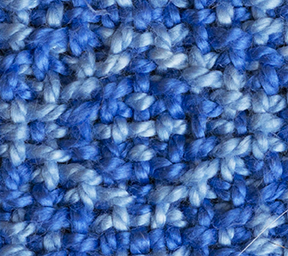
The solid lines that make up the motifs are not floats, as they are in a pointed twill, but are the result of the intersection of the same color warp and weft.
Powell’s book offers a life time of exploration for Shadow Weave. Maybe after Convergence I will be inspired to go back and try others……
Please email comments and questions to
Lifetime Achievement Award
Marcy Petrini
5/23/2016
I was very honored this past Thursday (5/19/16) to receive a Lifetime Achievement Award from the Craftsmen’s Guild of Mississippi (CGM) at a Guild Luncheon. I was introduced by Kathy Perito, my co-instructor for the fiber classes at the CGM, who is also an HGA Board member. I was asked to talk about my relationship with the Guild and what follows is a summary of what I said.

I thanked Kathy Perito, Ken McLemore, CGM President, the CGM Board of Directors, and the staff of CGM: Nancy Perkins, CGM Executive Director, Sheri Cox who has been involved with the weaving class for many years in one capacity or the other, and Tomika Cheatham who besides being a financial guru served as the registrar for the weaving classes for many years. I also thanked past Executive Directors for their support and I was happy that VA Patterson, Julia Daily and Kit Davis were present.
My fiber life started early in Italy where all of the women on Dad’s side of the family were fiber people. But it was my Dad who taught me that I could do whatever I set my mind to do (good thing I didn’t want to become a brain surgeon!), but whatever I did, to take it seriously, without taking myself too seriously; this led my weaving from a hobby to become a passion; he also taught me not to plan too closely because life has a way of making its own plan.
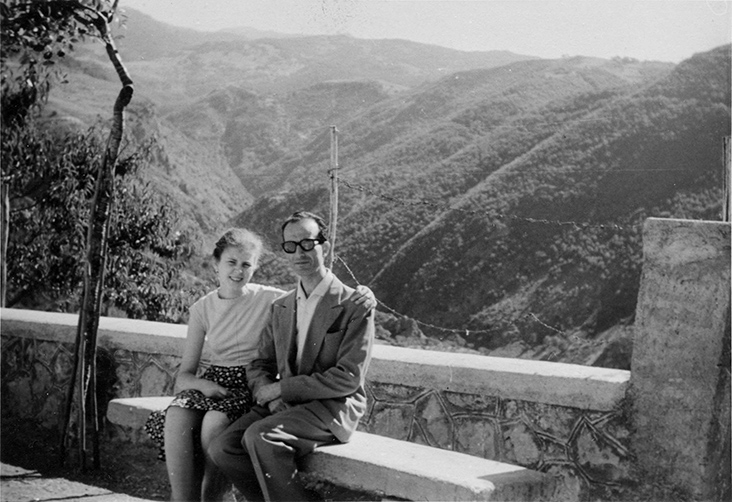
Based on that advice, I decided not to stay in Chicago for my graduate degree but instead to go to the University of Rochester. It seemed crazy at the time, but after some six years, I had met and married my husband Terry Dwyer who build me my loom, learning to weave at the university gallery and got my degree!
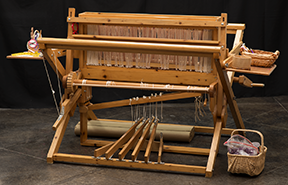
When we moved to Mississippi, it was Dan Overly, the Founder of the CGM and its first Executive Director, who convinced me to apply for Guild membership, even though I told him that I didn’t weave enough to sell my work; he pointed out that education is an important part of the Guild. Once accepted, to talked me into teach weaving, even though I objected that I had never taught weaving before.
So started my teaching weaving career. The looms the Guild owned had gone through a flood, needed a lot of work, but luckily Terry was familiar with looms, so he was the one maintaining them. The Guild’s offices and classes were housed in the old President’s House at Millsaps College. The sales gallery, craft demonstrations and festivals were at the then Craft Center on the Natchez Trace, a log cabin owned by the National Park Service. With my weaving class producing new weavers and under Dan leadership, the Chimneyville Weavers Guild became a reality. It flourished and later became the Chimneyville Weavers and Spinners Guild; we will be celebrating our 35th anniversary this fall. Here we are a few years back celebrating my new studio.
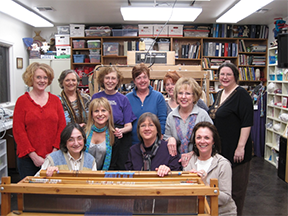
When it was time to demolish the President’s House, the Guild’s offices – and the looms – moved to the Craft Building on the Agricultural and Forestry Museum grounds. But we finally got a permanent home! When the new Craft Center was built, the Guild consolidated everything into this wonderful building. Looms had to be moved again – and hopefully for the last time! The studio is smaller, but it’s quality over quantity.
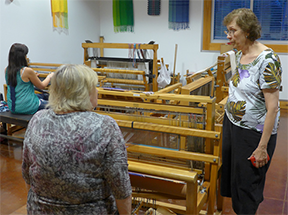
At some point my friend and former student Gio Chinchar asked me whether I didn’t get tired week in and week out to go teach the same class. And I said, no, it wasn’t really the same class; new students come, new challenges arise as we have a seemingly infinite number of combinations of fiber, yarns, colors and weaving structures. Each class is different and the teaching has progressed to writing, starting with the handouts I provided for the students. This led to my writing. In the late 90s I was asked to write a column called Right from the Start for Shuttle Spindle & Dyepot, the periodical of the Handweavers Guild of America. I became its regular columnist and I just wrote my 70th article. Now we also publish monographs on various weaving topics.
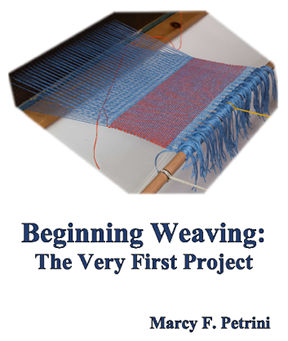
But I started thinking about the future; I couldn’t teach the class forever and I didn’t just want to walk away from a 35-year long project. At some point I would need to find someone to take over, but who? One happy day, this great lady entered into my life. Here is Kathy (Perito) with me at the Guild’s 40th Anniversary party. Kathy started as a student and it became obvious that she “got it” from day one. She became my assistant, and soon after my co-instructor. She quickly learned weaving structures, understands the looms, has great creativity and a can-do attitude that makes the class really fun. And it’s a great luxury for me – she does all the hard work, I get to think about what students need to know so I can write about it!
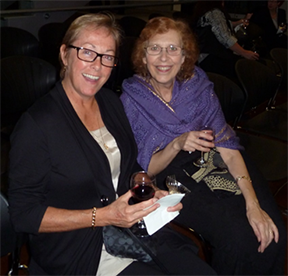
None of this would have been possible without this wonderful man, my husband Terry (Dwyer). He built my first loom, in the front of the studio here, maintained those in the Guild for many years, and assembled the computerized loom, in the back of the studio in the picture, from many, many boxes; he is the webmaster for my website and posts my weekly blogs. And here he is making a mess of my studio to take pictures, but then, I need those pictures!
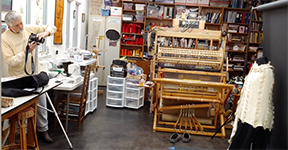
And here are some of the photos he took of my work. I don’t sell my pieces because every one of them is one of a kind that I need for my teaching and my writing; each one is an example of a weaving structure, technique, fiber, yarn, or color combination. I think of them as my reference library.
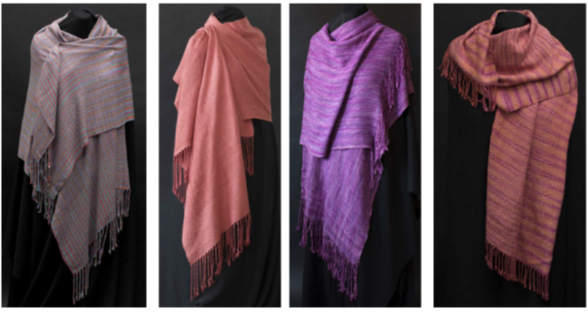
Again, I am greatly honored and very happy to have been a part of the Guild all these years.
Please email comments and questions to
Rules
Marcy Petrini
5/16/2016
I like to go with the flow – make up knitting patterns as I work, cook without recipes, travel with vague plans. Even in my weaving I like to design my pieces, leave my weft yarn options open, and sometimes unweave and re-thread or re-sley because I just didn’t like the way the weaving looked.
But I also know that we need rules, in weaving and in life. Imagine someone driving at 65 mph in a small neighborhood street. In weaving, I like to divide my rules into three sets.
The first is the rule that we all use, our language, if you will. When I say that I wove a table runner in huck, you know exactly what I mean – if you know the vocabulary. You may not know the exact threading, but you get an idea of what my runner may look like. And, as shown below, you may even know that you can weave warp and weft floats on both sides of the cloth.

The second class of rules are for the way we do things. As a teacher, I try very hard not to say “always” or “never” or “you must”, because people are different, looms are different and we all have preferences. What may be easy for someone with long arms, won’t work for someone with shorter ones, for example. But whenever I discuss how I do things, I also explain why I do the things the way I do them. For example, I say that I dress my loom from the back to the front to minimize the wear and tear of my warp threads by having them go through the heddles and reed only once. Any mixing of warp ends that I like to do at the loom, I can accomplish by using more than one warp.

The last set has rules that I use for myself, to overcome my poor tendencies, or to make my weaving easier, or to make myself accountable.
The one that I follow most religiously is: “never have a naked loom”. I learned from experience that if I take a project off one of the looms, and then start the planning for the next project, there will be procrastination and the loom will sit “naked” – empty – longer than it needs to be. I am not sure why. I like to weave, I enjoy every step of the process, perhaps some more than others, but still, a loom without a warp is a psychological barrier, and even having a bout laying on top of it is enough to get that next project going.
So, this is what I do: I start winding the warp for the next project while weaving the current piece. If I am delayed and I don’t wind a new warp before the current project is done, I simply don’t take it off until I have a least a bout wound. Then I can take the project off and lay the bout on the loom, which is thus no longer naked.
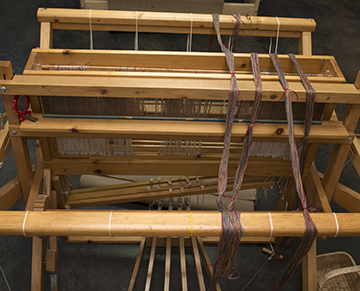
Here is my loom waiting for more bouts, so the warp can be wound.
What rules do you use?
Please email comments and questions to
